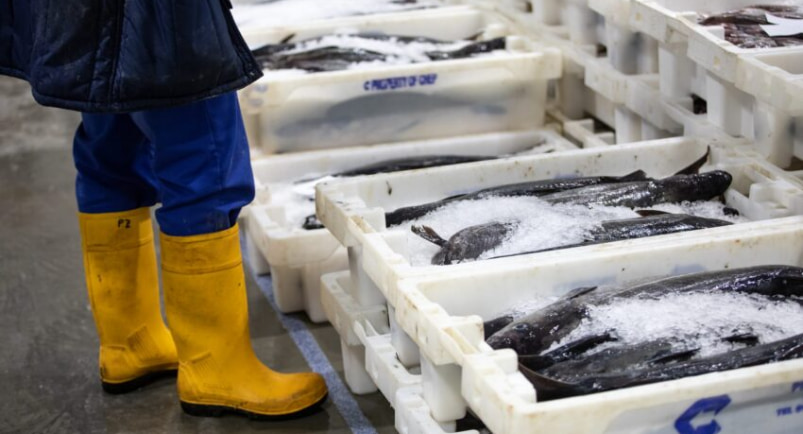
Best Practices for Food Customs Clearance in Dubai
The ultimate trading hub of the Middle East, Dubai has an insatiable appetite for a wide variety of excellent international cuisine. The food industry presents a huge opportunity for any Import export company in Dubai, or foreign supplier. But importing perishable goods necessitates accuracy, quickness, and rigorous adherence to some of the strictest safety regulations in the world. It’s difficult to navigate perishable cargo regulations. Understanding the UAE’s customs clearance procedure is crucial to ensuring your food shipment travels smoothly from port to plate. Discover the Best Practices for Food Customs Clearance in Dubai in plain English, emphasizing why working with knowledgeable food clearance firms in Dubai is a surefire way to succeed.
Table of Contents
Pre-Arrival Preparation – Compliance is Non-Negotiable

Long before your shipment departs its country of origin, food customs clearance in Dubai is successful. Strict regulations are enforced by Dubai Customs and the Food Control Department of the Dubai Municipality; failure to comply will undoubtedly result in delays, fines, or even rejection.
Register with the Right Authorities

1. Trade License – You need to have a current UAE trade license that expressly authorizes the import and sale of food.
2. Customs Code – Your business needs to have an active Importer Code and be registered with Dubai Customs.
3. FIRS Registration (Food Import & Re-Export System) – The most important step in the food import process is FIRS Registration (Food Import & Re-Export System). Before the shipment arrives, you must register all of your food products in the FIRS system, which is run by the Dubai Municipality (DM). This guarantees that the product satisfies all UAE safety regulations.
Essential Documentation Checklist

The standard commercial set of documents is not sufficient for food products. Make sure these are flawlessly prepared and sent in electronically –
1. Commercial Invoice & Packing List – Commercial invoices and packing lists must be precise, comprehensive, and accurately reflect the quantity and value.
2. Bill of Lading/Airway Bill – The transportation document is the Bill of Lading or Airway Bill.
3. Certificate of Origin – Verified and authorized by the nation’s Chamber of Commerce.
4. Health/Sanitary Certificate – A health/sanitary certificate, issued by the appropriate authority in the country of origin, attests to the food’s suitability for human consumption.
5. Halal Certificate (Mandatory for Meat and Poultry) – A halal certificate, which is required for meat and poultry, must be obtained from an authorized Islamic center in the nation of origin.
6. Certificate of Analysis (CoA) – Frequently needed for ingredients, additives, and processed foods.
7. Product Labels (Mandatory) – In accordance with UAE federal laws, labels must be in both Arabic and English and clearly list ingredients, nutritional information, and expiration dates.
Before the cargo arrives, collaborate with the customs clearance agent in Dubai to submit the necessary paperwork through the online Dubai Trade or comparable platforms. This significantly expedites the pre-clearance procedure.
Navigating the Clearance Process in UAE – Speed and Precision

A multi-layered inspection system intended to safeguard public health is used in the customs clearance process in UAE for food.
Step-by-Step Flow

1. Electronic Declaration – The customs declaration and all necessary documents are electronically submitted by your Dubai customs clearance agents.
2. Dubai Customs Review – After confirming the documents, Dubai Customs determines any applicable duties (usually 5% of the CIF value plus 5% VAT, but this varies). This also establishes the initial clearance fees for Dubai Customs.
3. DM Food Inspection Request – The application is automatically sent to the Dubai Municipality (DM) for inspection and approval because the product is food.
4. Physical/Laboratory Inspection – At the port or airport, DM inspectors perform a physical inspection (often in specialized temperature-controlled zones). To confirm adherence to safety regulations and FIRS registration data, samples may be collected for laboratory testing.
5. Final Release – The goods are released after receiving clearance from Dubai Customs and the Dubai Municipality.
Handling Perishables – The Cold Chain

Maintaining the cold chain is crucial for fresh, chilled, or frozen goods.
- Temperature Logging – Make sure the temperature loggers in your shipping containers are operational and that the data is accessible. Because spoiling affects health and safety, the DM may reject any temperature variation right away.
- Speed is Crucial – Delays are expensive and put food at risk of spoiling. Here is where seasoned food clearance companies in Dubai demonstrate their value by using their connections and quickness to give your perishable cargo priority.
The Role of Experts – Why You Need a Trusted Partner

It is dangerous and frequently results in expensive delays to attempt the food customs clearance process in UAE without professional assistance. Hiring a professional is an insurance policy for your products and reputation, not a cost.
The Value of S A G Logistic Services LLC

Businesses like S A G Logistic Services LLC are among the top food clearance firms in Dubai and reputable Dubai customs clearance agents because they are experts in this field.
1. Niche Expertise – They are aware of the intricate, particular requirements of FIRS and the Dubai Municipality (DM), which are very different from standard cargo clearance.
2. Documentation Perfection – They carefully check each document, avoiding the minor mistakes (such as incorrect labeling information or misclassified HS codes) that lead to the majority of customs rejections and severe fines.
3. Duty and Cost Optimization – To guarantee that you pay the correct Dubai Customs clearance charges and prevent unanticipated expenses or fines for under-declaration, a knowledgeable customs clearance agent in Dubai provides advice on the appropriate HS codes and valuations.
4. Timely Coordination – They ensure that perishable cargo is handled with priority and leaves the port promptly by coordinating the concurrent needs of the carrier, Dubai Customs, the Dubai Municipality inspection team, and the warehousing logistics.
Avoiding Common Pitfalls

Be proactive about these typical problems if you want to master the Best Practices for Food Customs Clearance in Dubai –
1. Inaccurate Labeling – Make sure labels are written in both Arabic and English. Verify that expiration dates are printed clearly and adhere to the UAE’s shelf-life regulations, which may be more stringent than those of other nations.
2. Missing Certificates – If the original Health/Sanitary Certificate and the Halal Certificate (if applicable) are missing, do not ship. Copies sent by fax are frequently rejected.
3. Temperature Deviation – Before loading, keep a close eye on the temperature data in your reefer (a refrigerated container). Make sure the container is sufficiently chilled beforehand.
4. Misclassification – When calculating duty, use the appropriate Harmonized System (HS) code. A small mistake may result in fines and reevaluation. This needs to be confirmed by your Dubai customs clearance agents.
5. Unregistered Products – Before the ship or aircraft leaves, make sure your product is registered and approved in the DM’s FIRS system.
Conclusion
For any Import export company in Dubai, the thriving food market offers enormous potential. However, careful preparation and perfect import procedure execution are essential to success. Preparation and collaboration are essential for a seamless, quick, and compliant food customs clearance process in Dubai.
You can expedite the Customs clearance process in UAE, reduce delays, and guarantee that your perishable goods arrive fresh, safe, and ready for market by registering your products in FIRS, refining your documentation, and working with a specialized partner like S A G Logistic Services LLC. The best strategy for food customs clearance in Dubai is to take a proactive approach.
